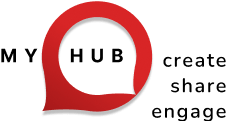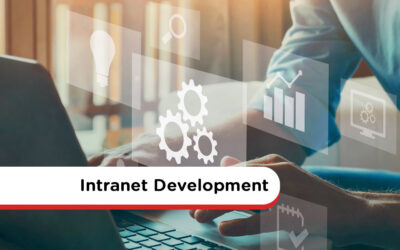Intranet Design Services
Choose from the self-build option with our support or work with one of our designers who will create a customized, fully-functioning intranet for your business, in 40 days or less, guaranteed!
The Challenge: Lack Of Time
You’ve defined your requirements and you know MyHub can deliver the outcomes you’re looking for. But do you lack the time and resources to customize your MyHub intranet site and get it launched on time?
The Solution: We Do It For You
By engaging with one of our designers, we’ll remove all of the complexity and risk by doing it all for you.
Planning For Success
Your MyHub intranet designer will lead the engagement process and ensure you’re updated on progress. The process is broken down into three key stages including:

Scope & Commercials
- Gathering requirements
- Defining launch objectives and timelines
- Developing a site plan including key pages, modules and content
- Agreeing the scope of works, pricing and terms.

Site Design
- Adding a company logo and changing site color options
- Designing and adding pages
- Adding content to pages including images, news articles, text, video and forms
- Adding folders and files to the Document Exchange
- Adding users to the site, Role Groups and Roles

Launch
- Handover and training
- Post-launch support
- Free site audit at any time
MyHub Designers, Delivering Great Outcomes
Intranet Design Articles
How To Build Trust In A Team: 10 Proven Strategies That Work
Building trust within teams isn’t a one-time event—it’s a continuous process rooted in consistent behaviors. The blog outlines ten proven strategies to cultivate trust: clear communication, giving autonomy, celebrating successes, and more. These insights draw on best practices that create an environment where team members feel safe to take risks and contribute authentically.
Key strategies include fostering transparency by sharing both successes and challenges openly, and embracing accountability by ensuring commitments are honored. Leaders play a pivotal role by modeling reliability and integrity—walking the talk—and by establishing clear processes that remove ambiguity and reduce micromanagement
The post also emphasizes the importance of social connection and shared experiences. Whether through informal gatherings or team-building exercises, these moments build rapport and reinforce mutual support. Recognizing individual and collective achievements further cements bonds, elevating team morale and performance .
CSR and Corporate Citizenship: What Every SME Needs To Know
Corporate citizenship, or CSR, is no longer a mere checkbox—it’s a powerful strategy that strengthens brand reputation, attracts socially conscious consumers, and enhances employee retention. Far from being exclusive to large corporations, SMEs can embrace impactful initiatives that contribute meaningfully to society and the environment.
The article outlines five accessible CSR areas every SME can explore: environmental projects like cutting energy use and reducing waste; philanthropic efforts such as donations and volunteering; ethical labor practices, including inclusivity, fair pay, and accessibility; community volunteering; and employee well-being programs like flexible working and health-focused perks. These diverse initiatives allow businesses of any scale to demonstrate genuine social responsibility.
A forward-thinking CSR strategy also aligns with broader trends—greater supply chain scrutiny, transparency to avoid greenwashing, mandated CSR reporting, and alignment with UN Sustainable Development Goals. By tracking and sharing concrete progress—such as emissions, volunteering hours, or donations—SMEs can build trust and credibility. Even small, consistent steps can position a business as a valued and responsible corporate citizen.
Employee Experience Management: The HR Guide
Employee experience (EX) encompasses every interaction an employee has with the organization—from hiring and onboarding to day-to-day workflows and eventual departure. It’s not just about policies; it’s about shaping a cohesive, supportive environment that acknowledges employees as the heart of the enterprise. A well-crafted EX strategy centers on creating meaningful journeys, leveraging technology, and listening actively to employee needs
Modern digital tools—like social intranets, internal communication platforms, and employee experience suites—serve as the backbone of a positive EX. These platforms integrate communication feeds, document hubs, recognition tools, training modules, and community features to provide a seamless and engaging employee journey. The result is better collaboration, faster information flow, and a more inclusive workplace for all staff, including desk-based, frontline, and hybrid workers .
Ultimately, organizations that prioritize employee experience see dividends in engagement, productivity, and retention. Enabling employees with the right digital tools, continuous development opportunities, and channels for feedback not only boosts morale but also drives tangible business outcomes. The digital workplace becomes more than a technology stack—it becomes a vibrant, living ecosystem that supports people and performance alike .
Intranet Development: Making Life Easier For An Intranet Developer
The blog emphasizes the transformative benefits of cloud-hosted intranet development over traditional or bespoke systems. By leveraging managed platforms like MyHub, organizations eliminate the complexity of server setup and maintenance, enabling teams to focus on creating impactful user experiences and branded intranet sites.
MyHub brings over 20 years of experience to the table, offering a streamlined development lifecycle that includes planning, design, launch, training, and ongoing support. Their proven process allows for fully branded intranet solutions in under 40 days—dramatically reducing time-to-launch and accelerating business value for agencies and internal IT departments.
Security is treated as a first-class priority: from SOC 2-compliant AWS hosting and SSL encryption to firewall protection and granular access controls. Compared to platforms like SharePoint, which often require patchwork integrations and complex customization, MyHub delivers core functionality right out of the box—enhancing usability, minimizing costs, and maximizing return on investment.
No-Call No-Show Policy In Four Easy Steps
The article highlights how unplanned absences—especially when employees neither call nor show up—pose significant challenges for organizations, disrupting schedules and putting pressure on teams. It stresses the necessity for businesses to adopt proactive strategies that not only discourage no-calls but also treat employees fairly, maintaining morale and trust.
Central to the proposed framework is crafting a clear and comprehensive attendance policy that defines what constitutes a no-call, no-show incident, outlines acceptable reporting methods, and communicates consequences transparently. Ensuring employees are well-informed through induction training and accessible handbooks is essential, as is offering multiple channels—such as phone lines, email, or intranet forms—for reporting absences, which helps accommodate emergencies or sudden situations.
Consistent enforcement of the policy is equally vital, with organizations expected to document incidents, apply disciplinary measures when warranted, and approach each case with empathy when genuine circumstances arise. By blending accountability with understanding and leveraging digital tools to streamline reporting, companies create a balanced and supportive attendance culture that benefits both employees and operational continuity.
Corporate Communication – Examples and Best Practices
Modern corporate communication bridges the gap between leadership and employees, ensuring a unified vision across all levels of the organization. By structuring internal messaging—whether through leadership announcements, policy updates, or team feedback—companies can foster transparency, alignment, and trust.
An intranet serves as the backbone for this process, offering centralized news feeds, staff directories, document storage, forums, and calendars—all accessible across devices. These features help break down silos, simplify information access, and support two-way communication.
Successful corporate communication strategies powered by intranets yield tangible benefits: faster and more consistent messaging (even from CEOs or managers), better collaboration across departments, secure handling of sensitive data, and deeper employee engagement backed by data-driven insights. Additionally, platforms like MyHub streamline the process—enabling alerts, forums, automations, mobile access, and feedback tools—all contributing to enhanced productivity and morale.







